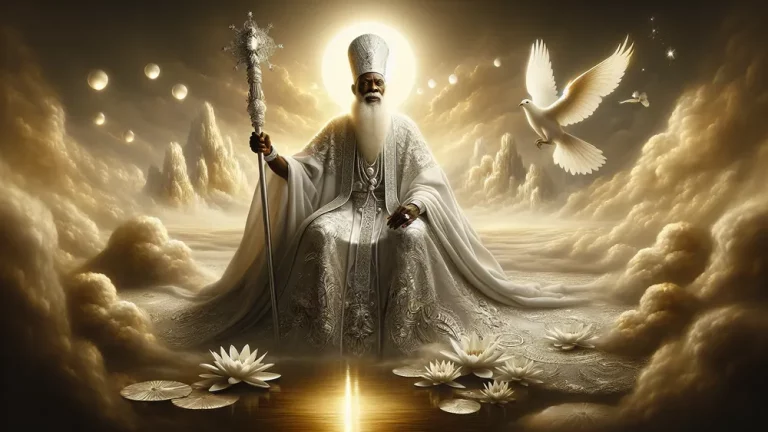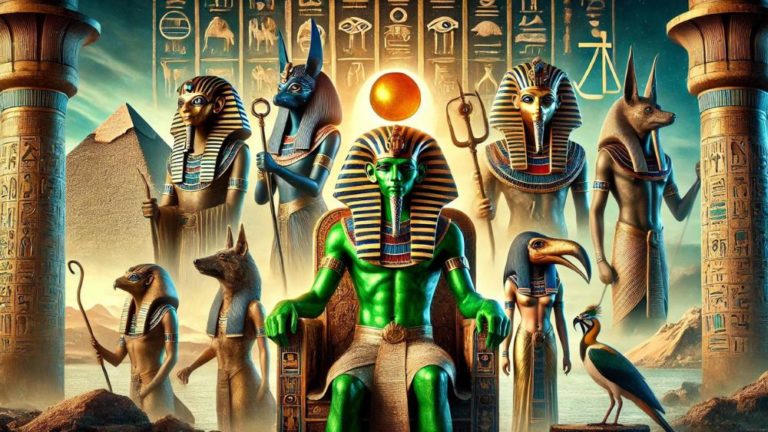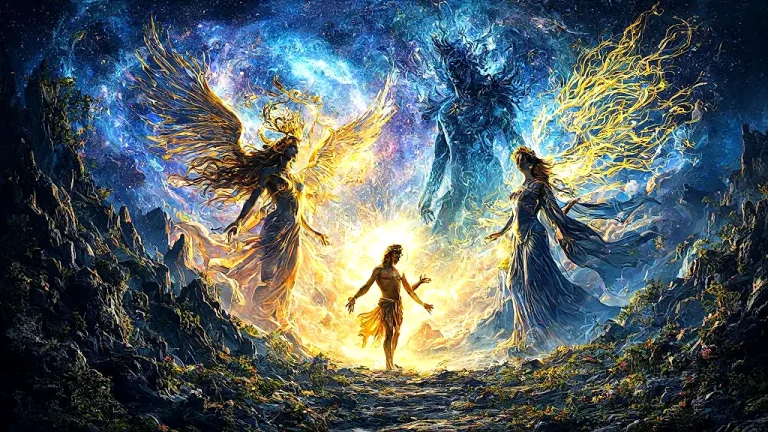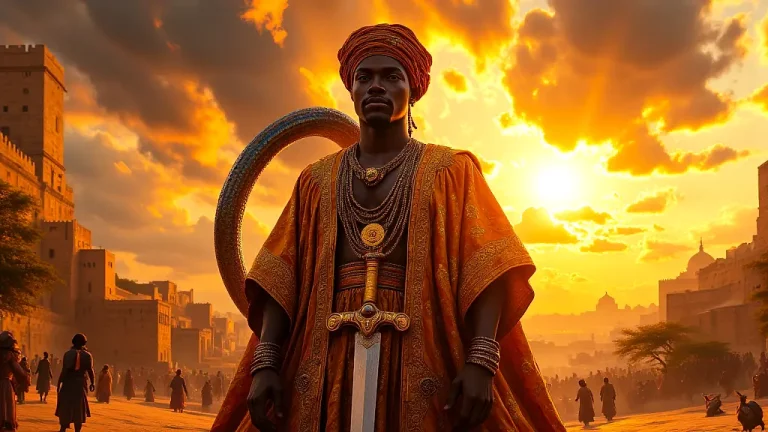Daphne: Greek Nymph Of Mythology And Transformation
Greek mythology is full of stories, and among them, the story of Daphne is a touching tale about change and love that doesn’t go both ways. Think of a place where gods and people deal with each other, and what’s normal and magical mix. Here is where Daphne’s story happens, a tale that grabbed people’s attention for a long time.
Key Points:
- Daphne, a water spirit linked to rivers, changed into a laurel tree to escape Apollo’s love.
- Apollo, the music and prophecy god, was struck by Eros‘ golden arrow, causing an unending love for Daphne.
- Daphne’s transformation into a laurel tree, right when Apollo was about to catch her, is a key moment in her story.
- The laurel tree, or daphne in Greek, became a symbol of victory, honor, and youth in Greek culture.
- Daphne’s change has inspired many works in art and literature, like Bernini’s statue Apollo and Daphne and Ovid’s Metamorphoses.
- Other key figures in her myth include Eros, Peneus, and other nymphs like Echo and Eurydice.
- Daphne’s story has had a long-lasting influence, from ancient Greek life and rituals to today’s art and media.
If Greek mythology is new to you, think of it as a bunch of old stories explaining things and human nature through gods, heroes, and creatures. In this post, we will look into the life of Daphne, a forest spirit, whose desperate attempt to get away from the god Apollo ends in her changing into a laurel tree.
We will see where she came from, the intense chase by Apollo, and what her change into a tree symbolizes. We will also look at how Daphne’s story has influenced Greek culture, art, and media today. By the end, you will get why Daphne’s story still means a lot in mythology and beyond.
Daphne: Overview and Key Facts
| Key Point | Description |
|---|---|
| Name | Daphne |
| Type | Nymph (a type of water spirit known as a naiad) |
| Parents | Daughter of the river god Peneus (or sometimes the river god Ladon) |
| Importance in Myths | Main character in a story where god Apollo changes her into a laurel tree |
| Transformation | Changes into a laurel tree to get away from Apollo |
| Stands for | The laurel tree represents winning, respect, and eternal youth in Greek culture |
| Cultural Impact | Led to many works being created in art, stories, and as a symbol in many rituals and traditions |
| Linked Deity | Apollo, the god of music, predicting the future, and healing |
| Important Stories | The chase by Apollo and her later change into a laurel tree |
| Depictions in Art | Often shown in old sculptures, paintings, and pottery |
| Modern Influence | Still talked about in today’s art, stories, and media |
The Tale of Daphne
To grasp Daphne’s importance in Greek mythology, we need to dig into the interesting story that makes her important. Let’s look at her beginnings, the dramatic chase, and the big change at the end of her story.
Where Daphne Came From
Daphne, known in Greek mythology, was a naiad, a type of water spirit linked to rivers and springs. She was the daughter of the river god Peneus, though some stories name the river god Ladon as her father. Think of a family tree that is closely tied to nature, with gods and nymphs linked to different elements. Daphne’s early life was tied closely to the natural environment.
She was often shown as a beautiful and free-spirited girl who roamed forests and rivers. Among divine beings was her lineage, making her story not just about personal change but also a reflection of the complex relationships between gods, nature, and people.
Daphne, a water spirit in Greek mythology, had a lineage connected to nature and was often shown as a free-spirited girl roaming forests and rivers, reflecting the interconnectedness between gods, nature, and people.
Apollo Chasing Daphne
The tale of Apollo pursuing Daphne starts with a dispute between Apollo, the god of music and prophecy, and Eros, the god of love. After defeating the Python, Apollo bragged about his victory and made fun of Eros for using a bow and arrow, claiming such weapons were unfit for a love god.
In response, Eros aimed a golden arrow at Apollo, causing him to fall madly in love with Daphne. Eros simultaneously struck Daphne with a leaden arrow, giving her a strong dislike for love and romance. This divine interference set the stage for the intense pursuit that ensued. As Apollo’s affection for Daphne intensified, he chased her with fiery devotion.
Daphne, on the other hand, was resolute in her decision to stay pure and avoid love, a promise she made to herself and her father. Picture a scenario from a romantic movie where one character ardently loves, while the other remains disinterested. Despite Apollo’s persistent advances, where he admired her beauty and professed eternal love, Daphne remained unmoved.
She ran through forests and along riverbanks, her heart filled with fear and urgency. Driven by Eros’s arrow, Apollo refused to be deterred and continued his pursuit with unwavering resolve. The chase culminated as Daphne, exhausted and realizing she could no longer flee from Apollo, called out to her father, the river god Peneus, for aid.
In a moment of divine intervention, Peneus transformed his daughter into a laurel tree right before Apollo could seize her. Picture a scene from a magical film where a character undergoes a sudden, dramatic change to escape danger. Heartbroken and sorrowful, Apollo hugged the laurel tree, promising to honor Daphne forever.
He declared the laurel as his sacred tree, with its leaves adorning victors and heroes, thus perpetuating Daphne’s memory in a form deserving of reverence for ages to come.
Turning into a Laurel Tree
Daphne’s story hits its peak when she turns into a laurel tree to get away from Apollo’s endless chase. When Apollo got close to her, Daphne, desperate and out of choices, called to her father, the river god Peneus, to rescue her. In an act of divine help, he changed her into a laurel tree. Her arms turned into tree branches, her skin became bark, and her hair became leaves.

This change saved her from Apollo and made her a figure that would be forever remembered in Greek mythology. Turning into a laurel tree has a deep meaning in Greek mythology. The laurel tree, called “daphne” in Greek, became a mark of victory, honor, and forever youth.
Apollo, saddened by her change, said the laurel tree would be sacred and promised to wear its leaves as a crown. This made the laurel a sign of winning, used to crown winners in sports and heroes. Daphne’s story shows unreturned love, the strength of gods’ actions, and how nature and gods are linked.
This change kept her memory alive, and the laurel tree became a lasting symbol of honor and success in Greek culture.
Why Daphne Matters in Greek Mythology
Knowing Daphne’s change and what it means shows us her big impact on Greek culture and mythology. To value her story, let’s look at the deep meanings and representations tied to her story.
What the Laurel Tree Stands For
In Greek myths and traditions, the laurel tree, also called “daphne,” stands for winning and respect. Like how athletes today get medals or trophies to show they did well, Greek winners wore laurel wreaths. This started with Apollo. After Daphne changed, he made the laurel tree special and used its leaves to make crowns for heroes and winners.
This laurel wreath, while not just physical strength, also meant smartness and skill. Poets and scholars, for example, wore laurel crowns, which showed their important place in society. Because Apollo was the god of music, prophecy, and healing, the laurel tree also stood for doing great things and having godly favor. So, the laurel tree became a symbol of winning, respect, and eternal youth in Greek stories and customs.
Daphne in Art and Stories
Daphne’s story has been a big source of ideas for artists and writers over time. In old art, she is often shown when she is turning into a laurel tree, showing that intense moment in her story.
For example, the famous statue “Apollo and Daphne” by Gian Lorenzo Bernini, kept in the Galleria Borghese in Rome, clearly shows the moment she changes, with Daphne’s fingers becoming leaves and her body turning into bark. Similarly, old Greek pottery often shows scenes of Apollo’s chase and Daphne’s desperate run, giving pictures that make the story come alive.
These pieces of art not only show the strong feelings in the story but also highlight the change and godly action.

In literature, Daphne’s tale has been told and changed by many writers, both old and new. The Roman poet Ovid gives one of the most famous versions of the story in his work “Metamorphoses,” where he clearly explains the chase and Daphne’s change. This text has been the basis for many later tellings and mentions in Western books. To make things clearer, here is a list of notable works that have Daphne in them:
- “Metamorphoses” by Ovid
- “Daphne” by John Dryden
- “Daphne” by Richard Strauss (an opera)
- “The Transformation of Daphne” by Antonio Canova (a statue)
- Different old Greek vases and pottery that show the myth
These works, in different forms and from different times, show the lasting appeal of Daphne’s story and its important effect on art and books.
Daphne’s story inspired many artists and writers throughout history, seen in ancient art and literature that capture her transformation into a laurel tree, emphasizing the emotional and divine aspects of the tale and its influence on various creations.
Other Figures in the Myth
To get the full picture of Daphne’s story, it’s important to know the other main characters in the myth. Let’s look at the roles and importance of these characters.
Apollo: The Music and Prophecy God
Apollo, one of the most important gods in Greek myths, has many roles and qualities. Apollo is the music god and is often seen with a lyre, an instrument he played very well, kind of like how a great musician today would. His music did more than entertain. It meant harmony and order, which means he kept things in balance.
Apollo is also the god of prophecy, and his oracle at Delphi was one of the most important religious places in ancient Greece. People from all over would visit to get his advice, like how we might ask a smart advisor today. His prophecy abilities underscored his link to truth and foresight, making him respected in both legends and real life.
In the story of Daphne, Apollo’s qualities and roles are key to understanding what happens. His chase of Daphne was driven by his godly traits and a curse from Eros (Cupid), who shot him with a golden arrow to cause uncontrollable love. This was payback because Apollo had laughed at Eros’s archery. Apollo’s nonstop chase shows his determination and passion, which are often linked to him.
However, it also shows the mix of good and bad in his nature – his power could bless or hurt. Daphne’s change into a laurel tree, a plant important to Apollo, means their lives are tied and highlights Apollo’s lasting effect on her story.

Other Famous Nymphs in Greek Myths
Nymphs in Greek myths are often seen as beautiful, young girls who live in different natural places like forests, rivers, and mountains. They are minor gods linked to nature, and their stories often mix with those of gods, heroes, and regular people. For example, Echo, a mountain nymph, is known for her sad love story with Narcissus.
Cursed by Hera to only repeat the words of others, Echo fell in love with the proud Narcissus, who ultimately fell in love with his own reflection, which led to both their downfalls. Eurydice is another well-known nymph, a dryad or tree nymph. Her love story with Orpheus is one of the saddest tales in Greek myths.
After dying from a snake bite, Eurydice’s soul was taken to the Underworld, and Orpheus’s attempt to bring her back is a story of love, loss, and the power of music.

To give a clear picture, here is a list of famous nymphs and their stories:
- Echo: Known for her one-sided love for Narcissus and her curse to only repeat others’ words.
- Eurydice: A tree nymph whose sad love story with Orpheus shows themes of love and loss.
- Calypso: A sea nymph who kept Odysseus on her island for several years in Homer’s “Odyssey.
- Arethusa: A water nymph who turned into a spring to escape the river god Alpheus.
- The Hesperides: Nymphs of the evening and the golden light of sunset, who took care of a blissful garden in a far western corner of the world.
These nymphs, each with their unique stories and qualities, add richly to the collection of Greek myths, showing the different roles and narratives that nymphs embody.
Daphne’s Influence Over Time
Knowing the wider effect of Daphne’s myth helps us see how her story has stayed important through the ages. Let’s look at how her story has changed both in ancient times and today.
How Daphne’s Story Shaped Ancient Greek Life
Daphne’s myth had a vital effect on ancient Greek culture, affecting many parts of daily life, festivals, and rituals. In ancient Greece, the laurel tree, which Daphne became, meant victory and honor. This was mostly seen in the Pythian Games, one of the four big games in ancient Greece, held in Delphi to honor Apollo.
Winners in these games were given laurel wreaths, a tradition that comes directly from Daphne’s story. This is similar to modern award ceremonies where winners get trophies or medals, meaning they did very well. Daphne’s story was also part of religious rituals and art. Temples for Apollo often had laurel branches in their decor and rituals, to show his connection to Daphne.
The laurel was also used in rituals to keep away evil and bring good luck. This is like how some plants or symbols are used today in religious or cultural practices for their believed protective or good properties. Daphne’s tale was a popular subject in ancient Greek art, like pottery, sculptures, and frescoes.
These were not only used to decorate but also to teach myths and moral lessons to future generations.
Daphne in Today’s Art and Media
Daphne’s story still interests artists and creators today, appearing in many types of modern art and media. For instance, her change into a laurel tree appears in many paintings, sculptures, and even digital art. Modern artists often change this myth to look at ideas of change, escape, and the link between people and nature.
You might see a digital artwork that uses virtual reality to put viewers in Daphne’s world, like how ancient Greek sculptures aimed to capture the key moment of her change. These modern ways let us experience the myth in new and creative ways, making it easier for more people to enjoy.
To give a clear picture, here is a comparison of ancient and modern depictions of Daphne:
| Aspect | Ancient Depictions | Modern Depictions |
|---|---|---|
| Medium | Pottery, sculptures, frescoes | Digital art, films, virtual reality |
| Themes | Transformation, divine intervention, nature | Transformation, escape, human-nature relationship |
| Purpose | Educational, religious, decorative | Artistic exploration, thematic exploration, entertainment |
| Examples | Bernini’s “Apollo and Daphne” sculpture, Greek vases | Digital artworks, films like “Metamorphosis” |
These comparisons mean that Daphne’s myth has changed over time, but still gives ideas and meaning to artists and people.
Daphne’s story inspires artists today, seen in various modern art forms that reinterpret her transformation into a tree, reflecting new perspectives on change and nature, allowing more people to appreciate and relate to the myth through diverse artistic expressions.
Pantheon of Greek Mythological Heroes and Figures
The pantheon of Greek mythological heroes and figures is large and includes different kinds of characters. These characters include gods, demigods, and legendary mortals whose stories affected Western culture and literature. From the powerful Zeus to the clever Odysseus, they each have a unique role in the many stories in Greek mythology.
For a complete overview, you can look at this list of all the Greek Mythological Heroes and Figures, which gives detailed information about each figure’s meaning and adventures.
FAQs
1. Who were Daphne’s parents in Greek mythology?
Daphne’s parents in Greek mythology were the river god Peneus and the nymph Creusa.
2. Why did Apollo pursue Daphne?
Apollo pursued Daphne because he was struck by one of Eros’ arrows, which incited an intense and unrelenting love for her.
3. What is the significance of Daphne’s transformation?
The significance of Daphne’s transformation lies in its symbolism of purity, escape, and the eternal nature of the laurel tree in Greek mythology.
4. How has Daphne been depicted in ancient art?
Daphne has been depicted in ancient art primarily through sculptures, paintings, and pottery that illustrate her transformation into a laurel tree.







